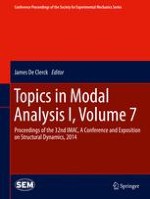
2014 | OriginalPaper | Buchkapitel
1. Infant Brain Response Against Shaking Vibration Using Finite Element Analysis
verfasst von : Takayuki Koizumi, Nobutaka Tsujiuchi, Keisuke Hara
Erschienen in: Topics in Modal Analysis I, Volume 7
Aktivieren Sie unsere intelligente Suche, um passende Fachinhalte oder Patente zu finden.
Wählen Sie Textabschnitte aus um mit Künstlicher Intelligenz passenden Patente zu finden. powered by
Markieren Sie Textabschnitte, um KI-gestützt weitere passende Inhalte zu finden. powered by